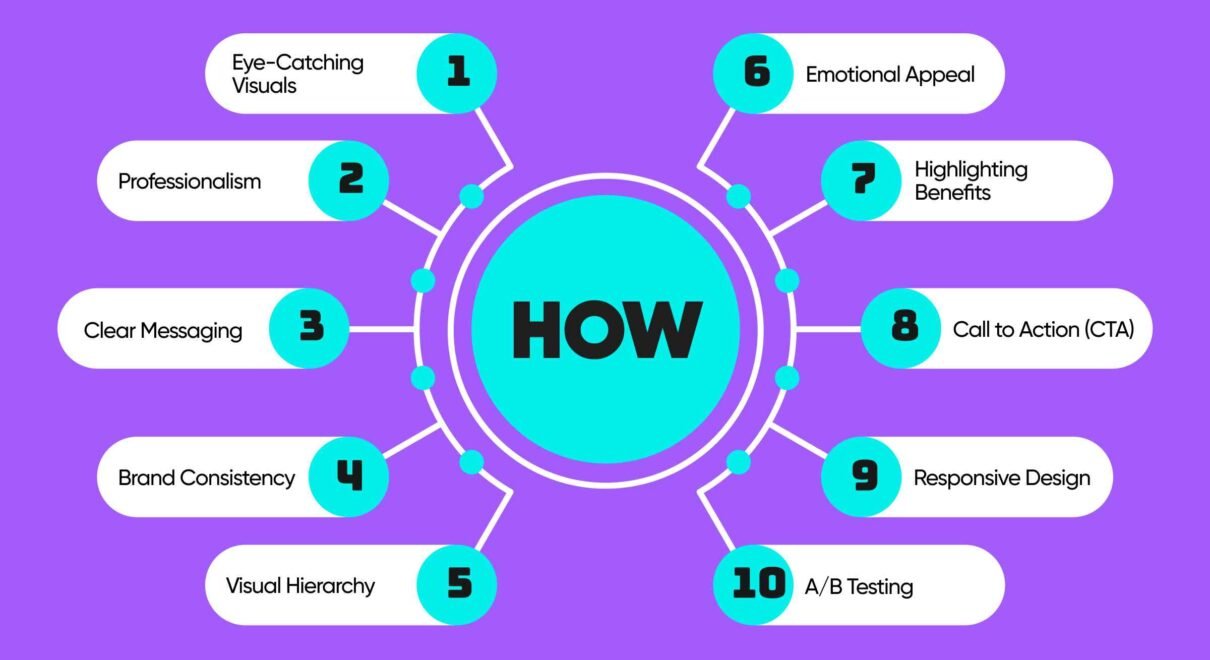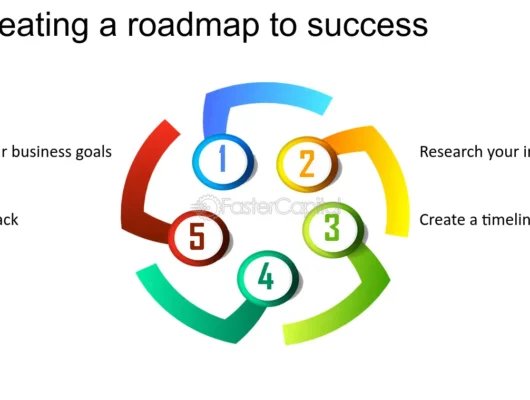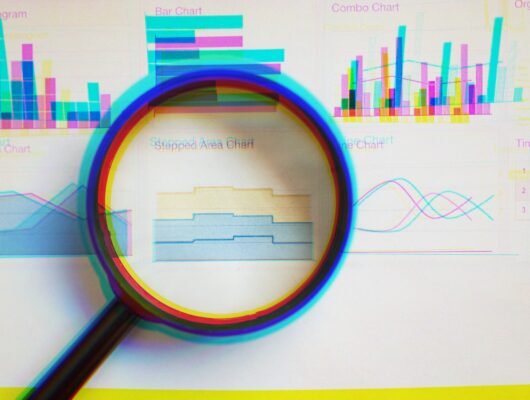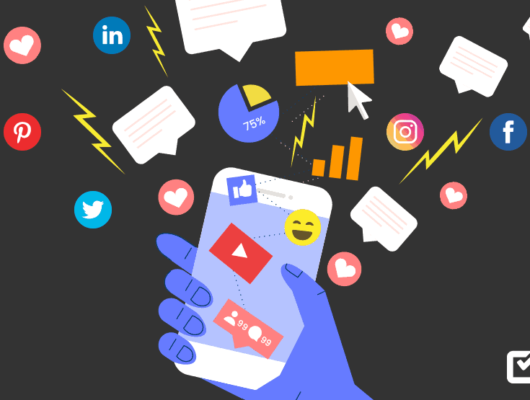In the digital age, your website is often the first interaction potential customers have with your brand. Web graphic design plays a crucial role in shaping that experience, from the overall look and feel of your site to the way information is presented.
A well-designed website not only captures attention but also communicates your brand’s message, engages users, and drives conversions.
This article explores the importance of web graphic design, its key elements, and how to create a visually appealing and effective website.
What Is Web Graphic Design?
Web graphic design involves creating and arranging visual elements on a website to enhance its aesthetics and usability. This includes everything from layout design, color schemes, and typography to images, icons, and interactive elements.
The goal of web graphic design is to create a visually appealing and user-friendly website that aligns with your brand’s identity and objectives.
Why Web Graphic Design Matters
1. Creates a Strong First Impression
Your website is often the first point of contact between your brand and potential customers. A well-designed website creates a positive first impression, making visitors more likely to stay and explore. A cluttered or outdated design, on the other hand, can drive visitors away, costing you potential customers.
2. Enhances User Experience (UX)
Good web graphic design is about more than just aesthetics; it’s also about functionality and usability. A well-designed website is easy to navigate, with clear calls to action and intuitive design elements that guide users through their journey. Enhancing user experience increases the likelihood of visitors engaging with your content, returning to your site, and converting into customers.
3. Communicates Your Brand Identity
Your website is an extension of your brand. Web graphic design ensures that your site reflects your brand’s identity, values, and personality. Consistent use of color schemes, typography, and imagery helps reinforce your brand’s message and makes your site more recognizable.
4. Improves Engagement and Conversion Rates
Visual elements like images, videos, and graphics can significantly enhance user engagement. Well-designed graphics and layouts draw attention to key information and encourage users to take action, whether that’s making a purchase, signing up for a newsletter, or contacting your company. Effective web graphic design can lead to higher conversion rates by making it easier for users to find and interact with important content.
5. Supports SEO and Accessibility
Web graphic design also plays a role in search engine optimization (SEO) and accessibility. A well-structured design with optimized images, responsive layouts, and clear navigation can improve your site’s performance in search engine rankings. Additionally, designing with accessibility in mind ensures that your website is usable by people with disabilities, expanding your reach and inclusivity.
Key Elements of Web Graphic Design
1. Layout and Structure
The layout is the foundation of your website’s design. A well-organized layout ensures that content is presented clearly and logically, making it easy for users to find what they’re looking for. The structure should be intuitive, with a hierarchy that guides users from the most important elements to secondary information.
2. Color Scheme
Colors play a crucial role in web graphic design, as they can evoke emotions and set the tone for your brand. Your color scheme should be consistent with your brand identity and create a cohesive look across your website. It’s important to choose colors that work well together and provide enough contrast for readability.
3. Typography
Typography affects both the readability and aesthetic appeal of your website. Choosing the right fonts and ensuring consistent use of typefaces throughout the site is key to creating a professional and polished look. Typography should be legible and align with your brand’s tone, whether that’s modern, classic, playful, or serious.
4. Imagery and Graphics
Images and graphics are essential for making your website visually appealing and engaging. High-quality images, custom illustrations, and icons can help break up text, illustrate concepts, and guide users through the site. It’s important to use images that are relevant to your content and optimized for fast loading times.
5. Navigation and User Interface (UI)
Navigation is a critical aspect of web graphic design. A well-designed user interface (UI) ensures that users can easily find their way around your site. This includes clear menus, links, and buttons that are easy to identify and use. Good navigation design enhances user experience and helps reduce bounce rates.
6. Responsive Design
With the increasing use of mobile devices, responsive design is more important than ever. Web graphic design must ensure that your website looks and functions well on all devices, including desktops, tablets, and smartphones. Responsive design involves creating flexible layouts that adapt to different screen sizes and orientations.
7. Call to Action (CTA) Design
Calls to action are crucial for driving user engagement and conversions. Effective CTA design involves creating buttons and links that stand out visually and encourage users to take the desired action. This could be anything from “Buy Now” to “Contact Us.” The design should be eye-catching but also aligned with the overall look and feel of the website.
The Web Graphic Design Process
1. Research and Planning
The first step in the web graphic design process is understanding your brand, target audience, and goals for the website. This involves researching competitors, analyzing user behavior, and planning the site’s structure and content. A clear strategy is essential for guiding the design process and ensuring that the final website meets your objectives.
2. Wireframing and Prototyping
Wireframing involves creating a basic outline or blueprint of the website’s layout. This helps to visualize the structure and placement of content before adding detailed design elements. Prototyping takes this a step further by creating a more interactive version of the design, allowing for testing and feedback before the final design is implemented.
3. Design and Development
Once the wireframe and prototype are approved, the actual design work begins. This includes selecting color schemes, typography, images, and other visual elements. The design is then developed into a functional website, incorporating responsive design techniques to ensure compatibility across different devices.
4. Testing and Optimization
Before launching the website, it’s important to test it thoroughly to identify any issues with functionality, usability, or performance. This includes checking for broken links, testing the site on different devices and browsers, and optimizing images and code for faster loading times. User feedback during this stage can be invaluable for making final adjustments.
5. Launch and Maintenance
After testing and optimization, the website is ready for launch. Post-launch, it’s important to monitor the site’s performance and make ongoing updates and improvements as needed. Regular maintenance ensures that the website remains up-to-date, secure, and aligned with evolving user needs and industry trends.
Common Web Graphic Design Mistakes to Avoid
1. Overloading with Visuals
While visuals are important, overloading a website with too many images, videos, or animations can slow down loading times and overwhelm users. It’s essential to strike a balance between aesthetics and functionality, using visuals strategically to enhance, rather than detract from, the user experience.
2. Ignoring Mobile Users
With a significant portion of web traffic coming from mobile devices, ignoring responsive design can alienate a large segment of your audience. Ensure that your website is fully optimized for mobile users, with layouts, images, and navigation that work seamlessly across all screen sizes.
3. Neglecting User Experience (UX)
A website that looks good but is difficult to navigate will frustrate users and drive them away. Always prioritize user experience in your design decisions, focusing on creating a site that is easy to use, with intuitive navigation and clear calls to action.
4. Using Inconsistent Branding
Consistency is key in web graphic design. Inconsistent use of branding elements, such as colors, fonts, or logos, can confuse users and weaken your brand’s identity. Ensure that all design elements are aligned with your brand guidelines and create a cohesive look and feel across the site.
Conclusion
Web graphic design is a critical component of creating a successful online presence. By focusing on key elements like layout, color scheme, typography, and user interface design, you can create a website that not only looks great but also enhances user experience and drives business goals.
Whether you’re building a new website or redesigning an existing one, investing in professional web graphic design is essential for establishing a strong, memorable, and effective digital presence.






